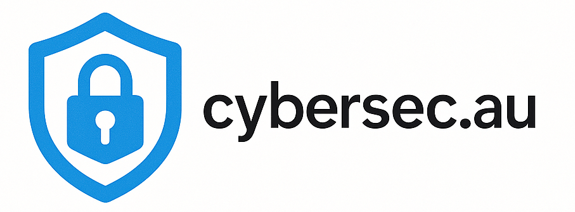Australian businesses face an impossible choice: move fast and break things, or move slowly and get disrupted. Digital transformation demands speed, but cybersecurity demands caution. The organizations that solve this paradox will dominate their markets—those that don't will become cautionary tales.
⚖️ The Transformation Paradox
🚀 Speed Imperative
- Market disruption pressure
- Customer expectation acceleration
- Competitive advantage timing
- Innovation window closure
🛡️ Security Imperative
- Increasing cyber threat sophistication
- Regulatory compliance requirements
- Customer trust and reputation
- Business continuity protection
The False Choice
Most organizations frame digital transformation security as a trade-off: you can have speed or security, but not both. This false dichotomy has led to two equally dangerous approaches:
The "Security Later" Approach
Prioritize speed and address security afterward:
- Short-term gains: Faster time to market and feature delivery
- Long-term costs: Technical debt, security retrofitting, incident response
- Risk accumulation: Growing attack surface and vulnerability exposure
- Cultural problems: Security seen as innovation inhibitor
The "Security First" Approach
Prioritize security and slow down transformation:
- Reduced risk: Lower probability of security incidents
- Innovation drag: Slower response to market opportunities
- Competitive disadvantage: Losing market position to faster competitors
- Opportunity cost: Missing digital transformation benefits
The Third Way: Security-Enabled Velocity
Leading Australian organizations are discovering a third approach: using security as an accelerator rather than a brake. This requires fundamental changes to how we think about and implement cybersecurity.
Security as Code
Embed security into the development and deployment process:
- Infrastructure as Code (IaC): Security controls defined in code
- Policy as Code: Automated security policy enforcement
- Compliance as Code: Automated regulatory compliance checking
- Security testing automation: Continuous security validation
DevSecOps Integration
Integrate security throughout the development lifecycle:
- Shift-left security: Security testing early in development
- Continuous integration: Automated security checks in CI/CD pipelines
- Real-time feedback: Immediate security feedback to developers
- Security champions: Security advocates within development teams
🔄 Secure Transformation Framework
Secure Foundation
Build security into transformation architecture
- Zero Trust architecture
- Cloud-native security
- Identity-centric design
Automated Security
Automate security to match transformation speed
- Security automation
- Continuous monitoring
- Automated response
Adaptive Defense
Create security that evolves with transformation
- AI-powered security
- Behavioral analytics
- Continuous learning
Practical Implementation Strategies
Strategy 1: Security by Design
Integrate security considerations from the earliest stages:
- Threat modeling: Identify security requirements during design
- Security architecture: Build security into system architecture
- Privacy by design: Embed privacy controls from the start
- Secure defaults: Make the secure choice the easy choice
Strategy 2: Continuous Security Validation
Validate security continuously rather than at gates:
- Automated testing: Security tests in every deployment
- Real-time monitoring: Continuous security posture assessment
- Feedback loops: Rapid security feedback to development teams
- Iterative improvement: Regular security enhancement cycles
Strategy 3: Risk-Based Acceleration
Accelerate low-risk changes while maintaining controls for high-risk ones:
- Risk classification: Categorize changes by security risk level
- Differentiated processes: Faster processes for lower-risk changes
- Automated approvals: Pre-approved patterns for common changes
- Exception handling: Streamlined processes for urgent security needs
Technology Enablers
Cloud-Native Security
Leverage cloud platforms for security at scale:
- Serverless security: Security without infrastructure management
- Container security: Secure microservices and containerized applications
- API security: Protect application programming interfaces
- Multi-cloud security: Consistent security across cloud providers
AI and Machine Learning
Use AI to accelerate both transformation and security:
- Automated threat detection: AI-powered security monitoring
- Predictive analytics: Anticipate security issues before they occur
- Intelligent automation: Smart security orchestration and response
- Adaptive controls: Security that adjusts to changing conditions
Organizational Change Management
Cultural Transformation
Build a culture that embraces both speed and security:
- Shared responsibility: Security as everyone's job, not just IT's
- Fail-fast mentality: Quick learning from security mistakes
- Continuous improvement: Regular enhancement of security practices
- Innovation mindset: Creative approaches to security challenges
Skills and Capabilities
Develop new skills for secure transformation:
- Security engineering: Building security into systems and processes
- Cloud security: Securing cloud-native applications and infrastructure
- Automation skills: Creating and managing automated security processes
- Business acumen: Understanding business context for security decisions
Measuring Success
Velocity Metrics
Track transformation speed without compromising security:
- Deployment frequency: How often you release new features
- Lead time: Time from idea to production
- Recovery time: Time to recover from failures
- Change failure rate: Percentage of changes causing issues
Security Metrics
Ensure security keeps pace with transformation:
- Security debt: Accumulated security technical debt
- Vulnerability resolution time: Speed of security issue resolution
- Security automation rate: Percentage of security processes automated
- Compliance velocity: Speed of meeting new compliance requirements
Working with Transformation Security Partners
Solving the digital transformation security paradox requires partners who understand both business strategy and technical implementation. Leading cybersecurity providers like Affinity MSP offer transformation security services including:
- Secure digital transformation strategy and planning
- DevSecOps implementation and automation
- Cloud security architecture and migration support
- Continuous security monitoring and optimization
- Cultural change management and training
The Resolution
The digital transformation security paradox isn't really a paradox at all—it's a design challenge. Organizations that solve it don't choose between speed and security; they architect solutions that deliver both.
The key insight is that security, when done right, becomes an enabler of speed rather than an impediment to it. The organizations that understand this will lead their industries in the digital age.
Accelerate Secure Digital Transformation
Don't let the speed vs security paradox slow your digital transformation. Get expert guidance on building security that accelerates rather than inhibits innovation.
Schedule Transformation Consultation